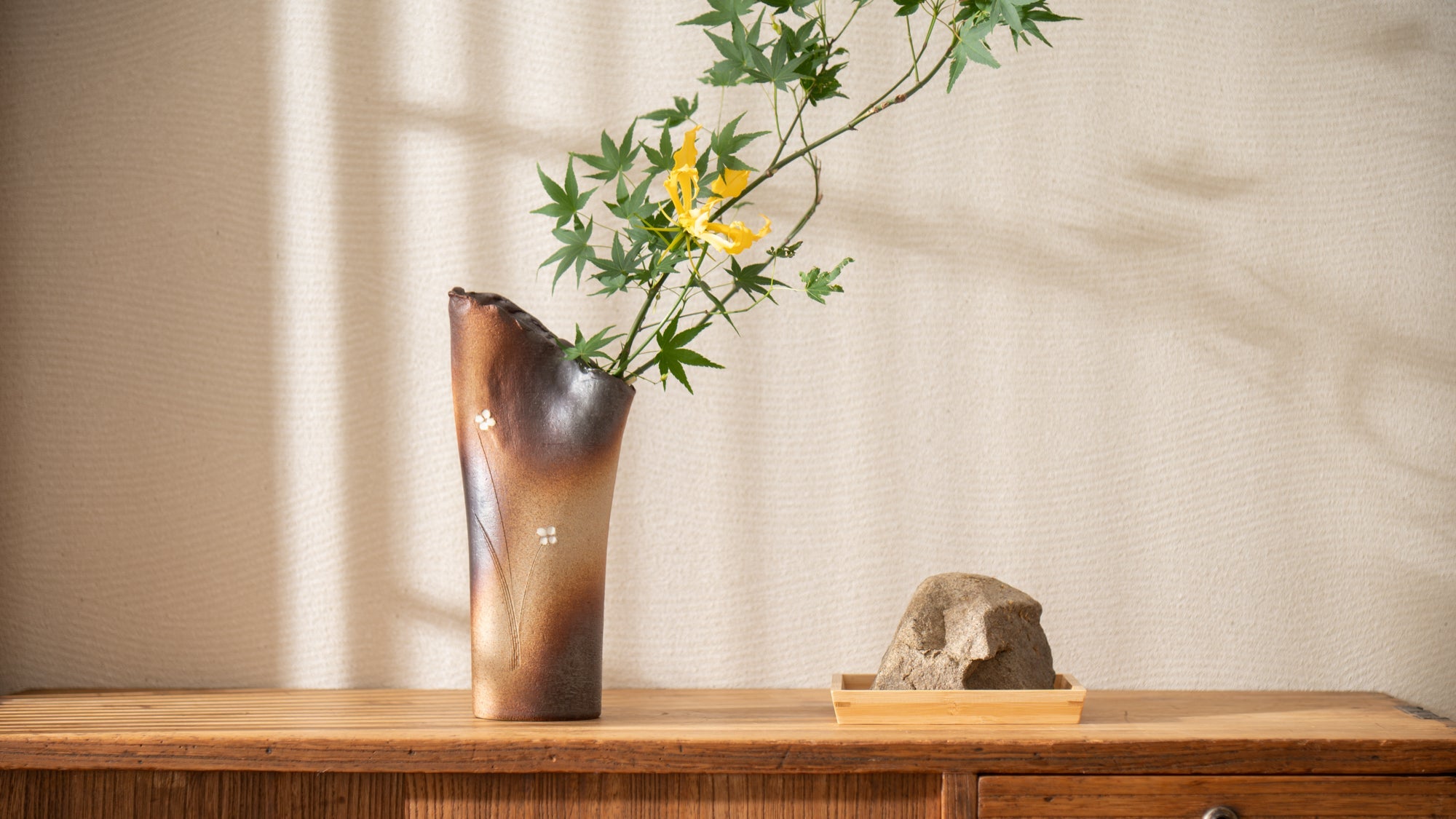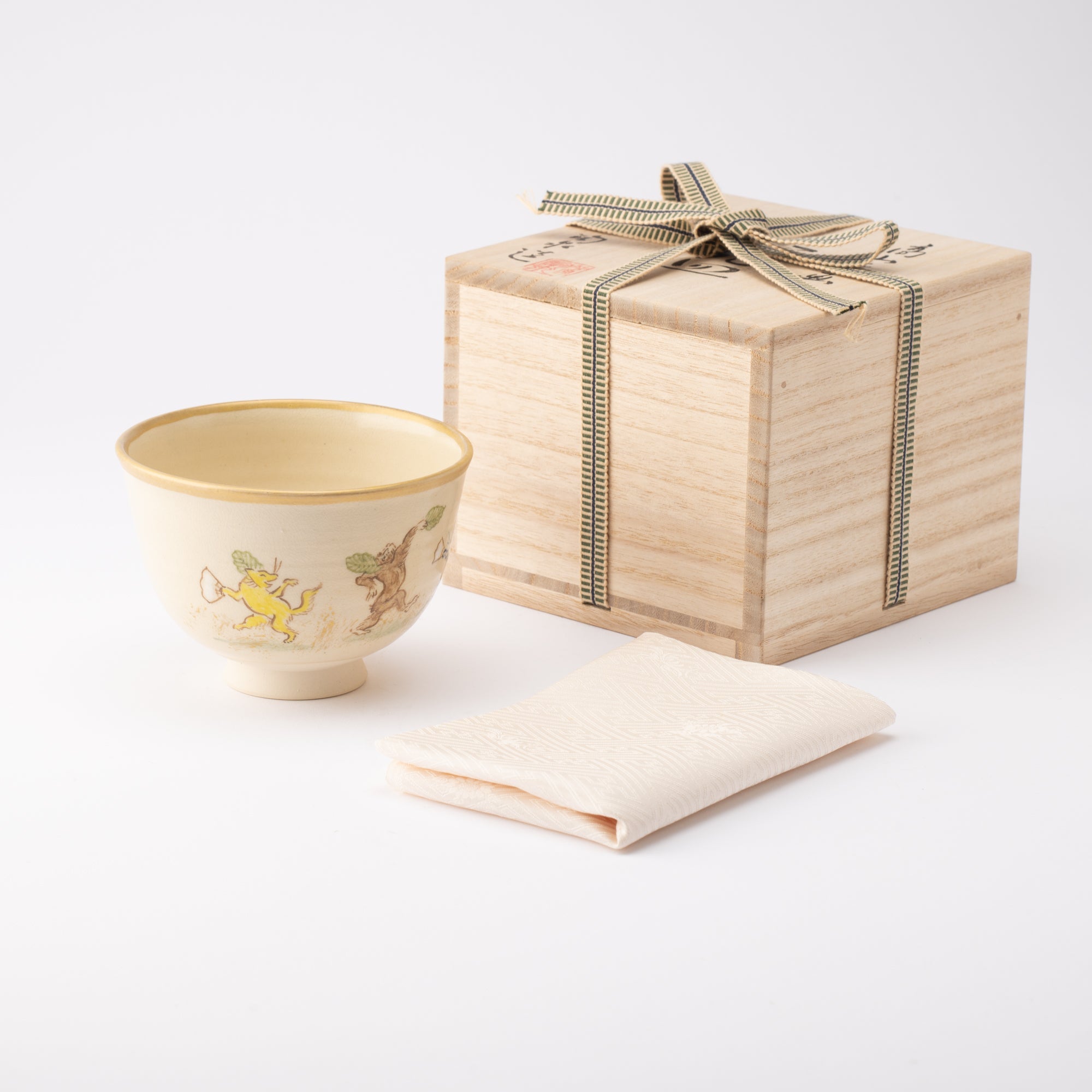
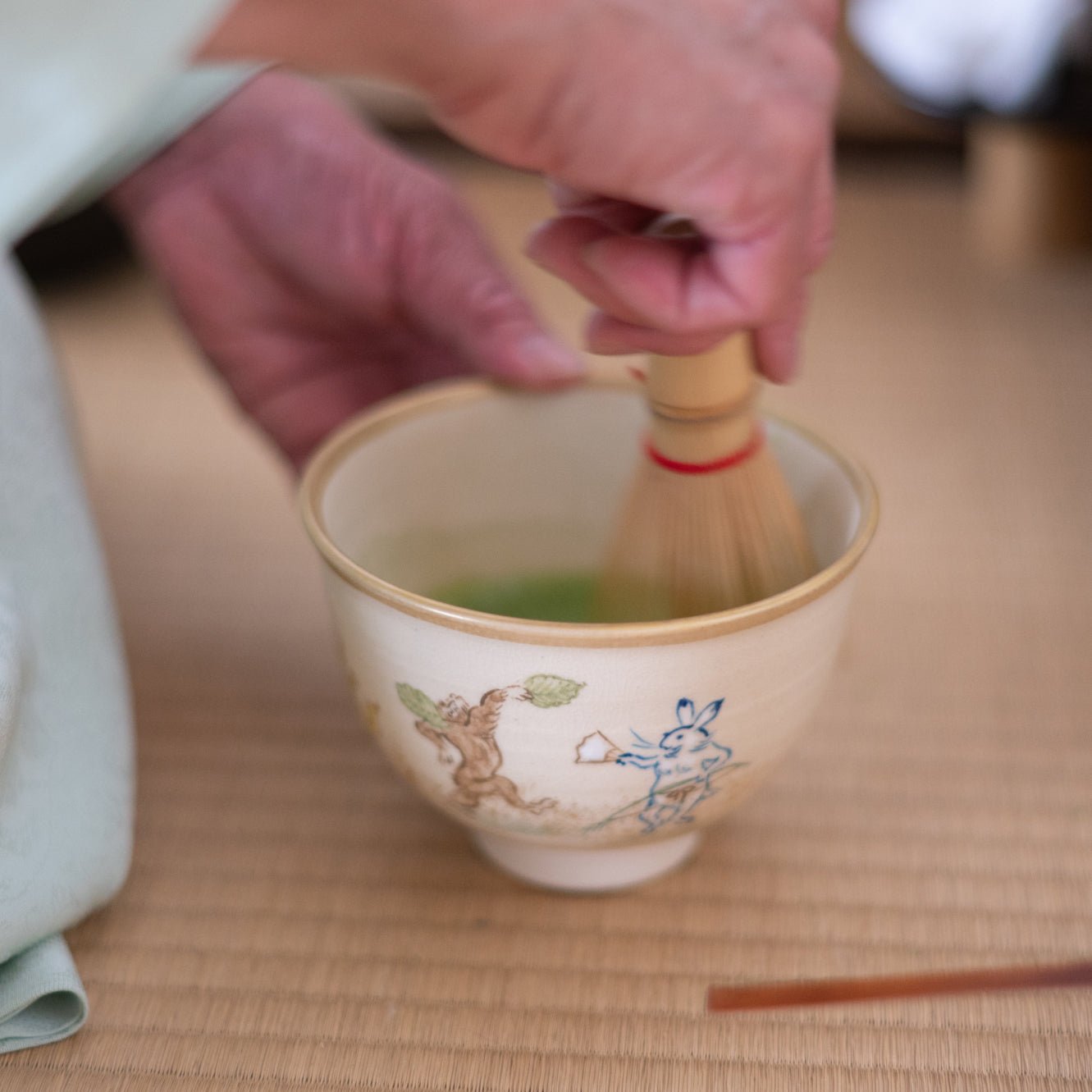
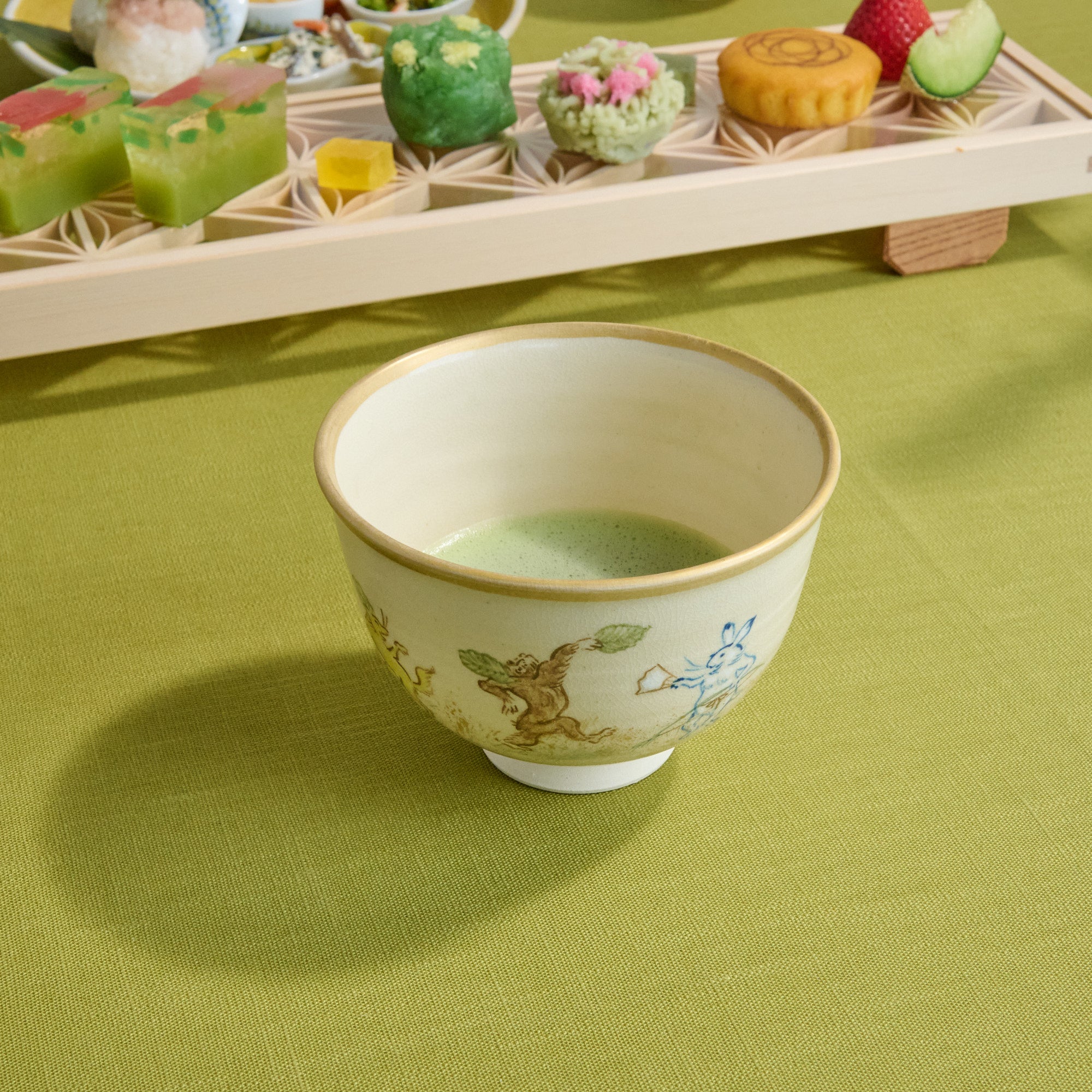
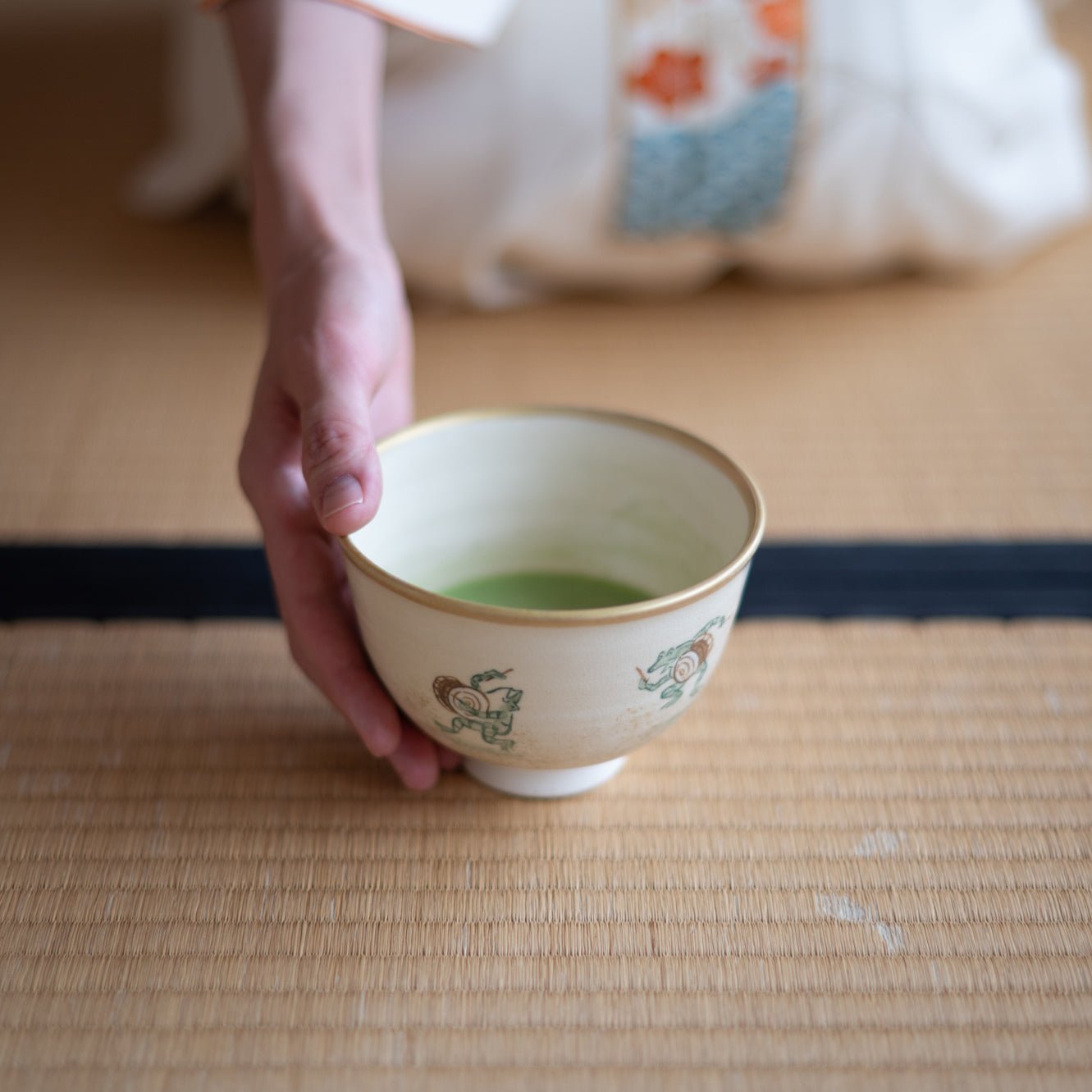
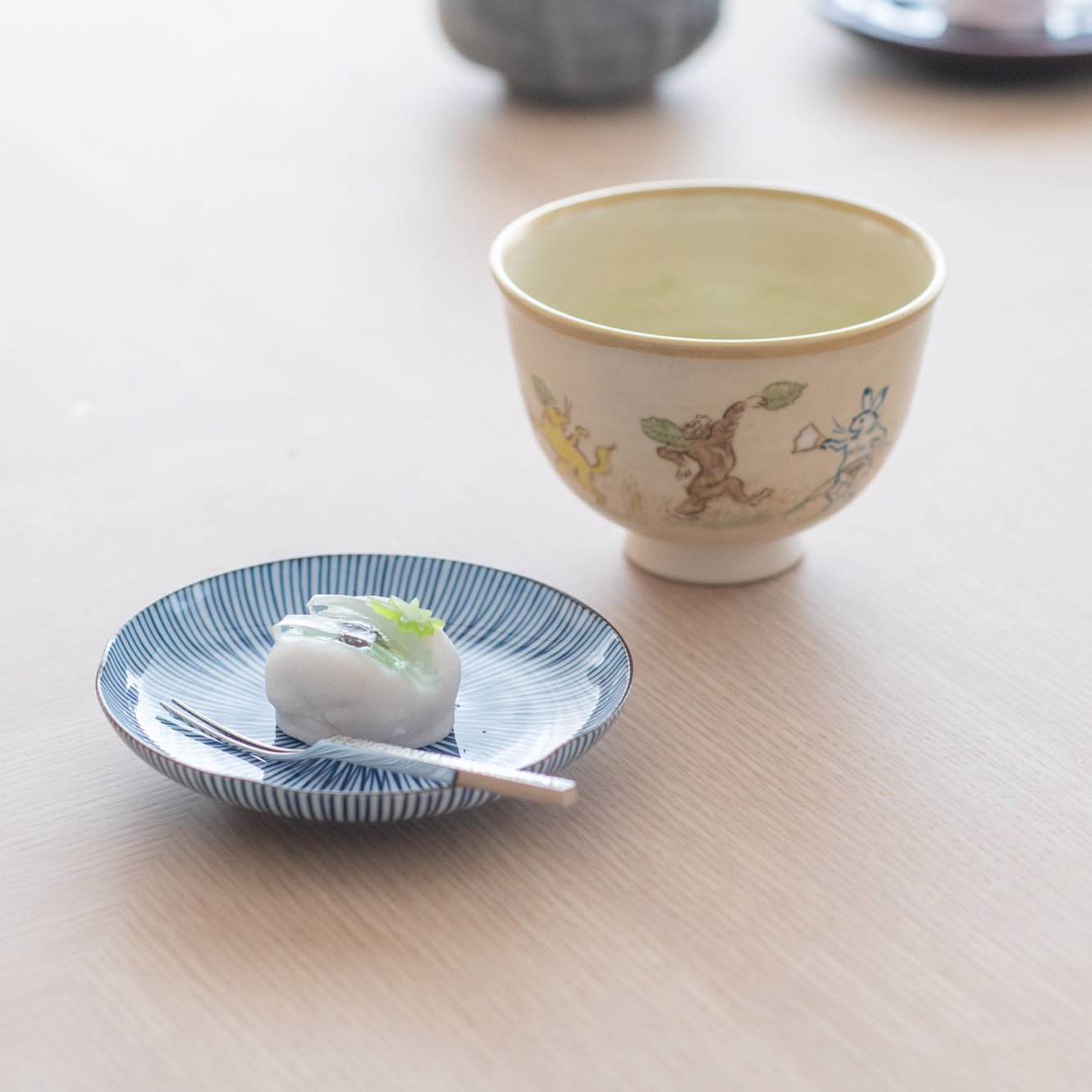
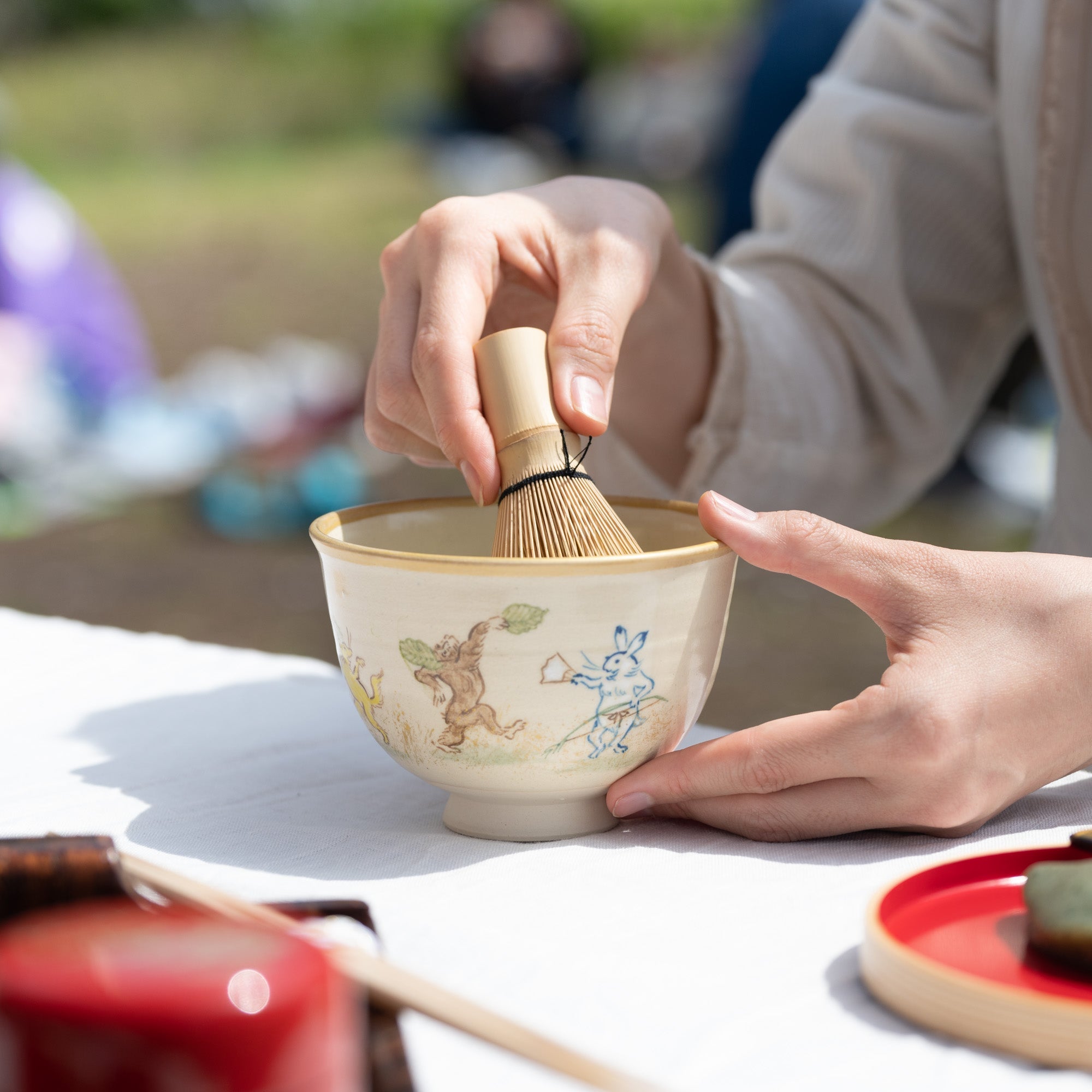
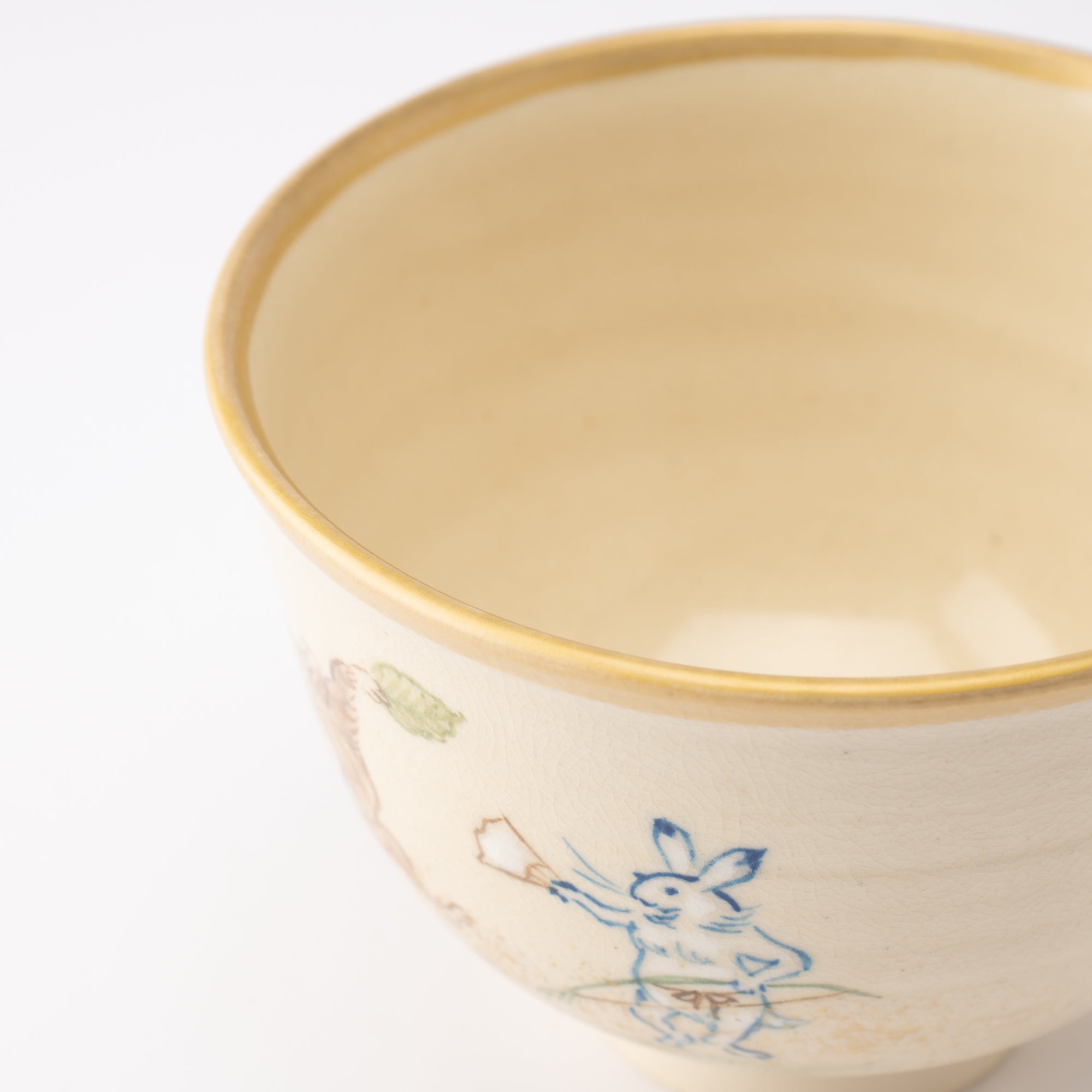
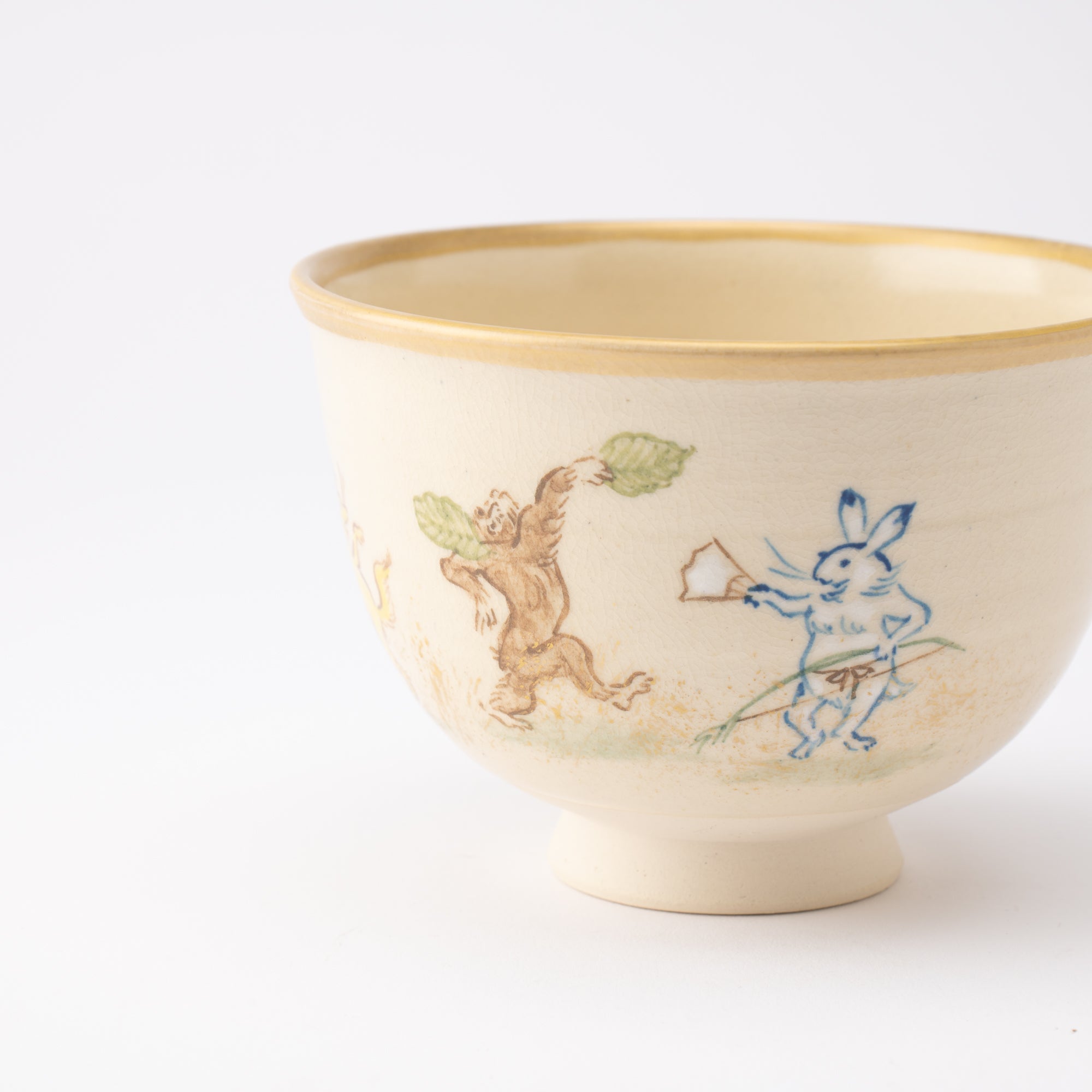
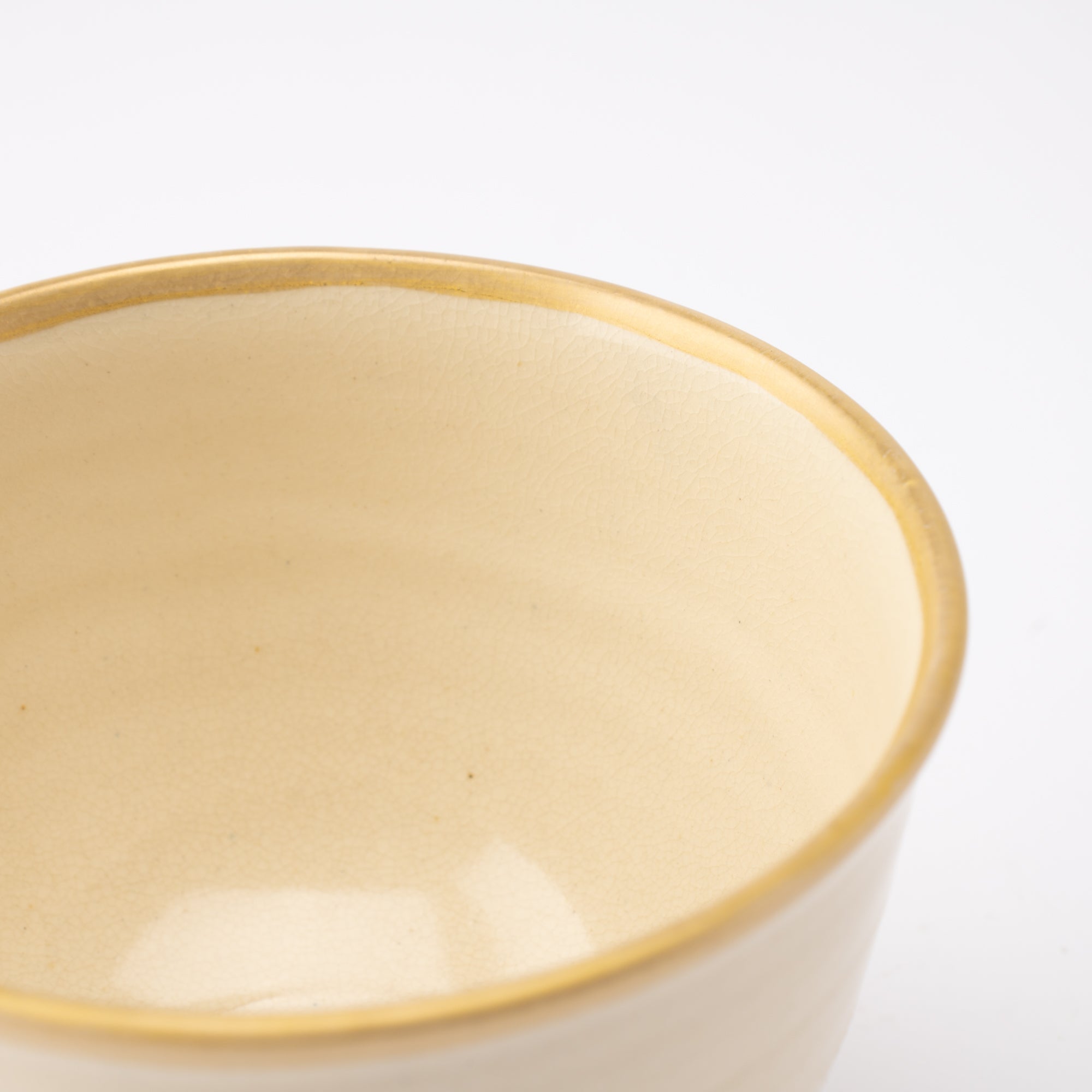
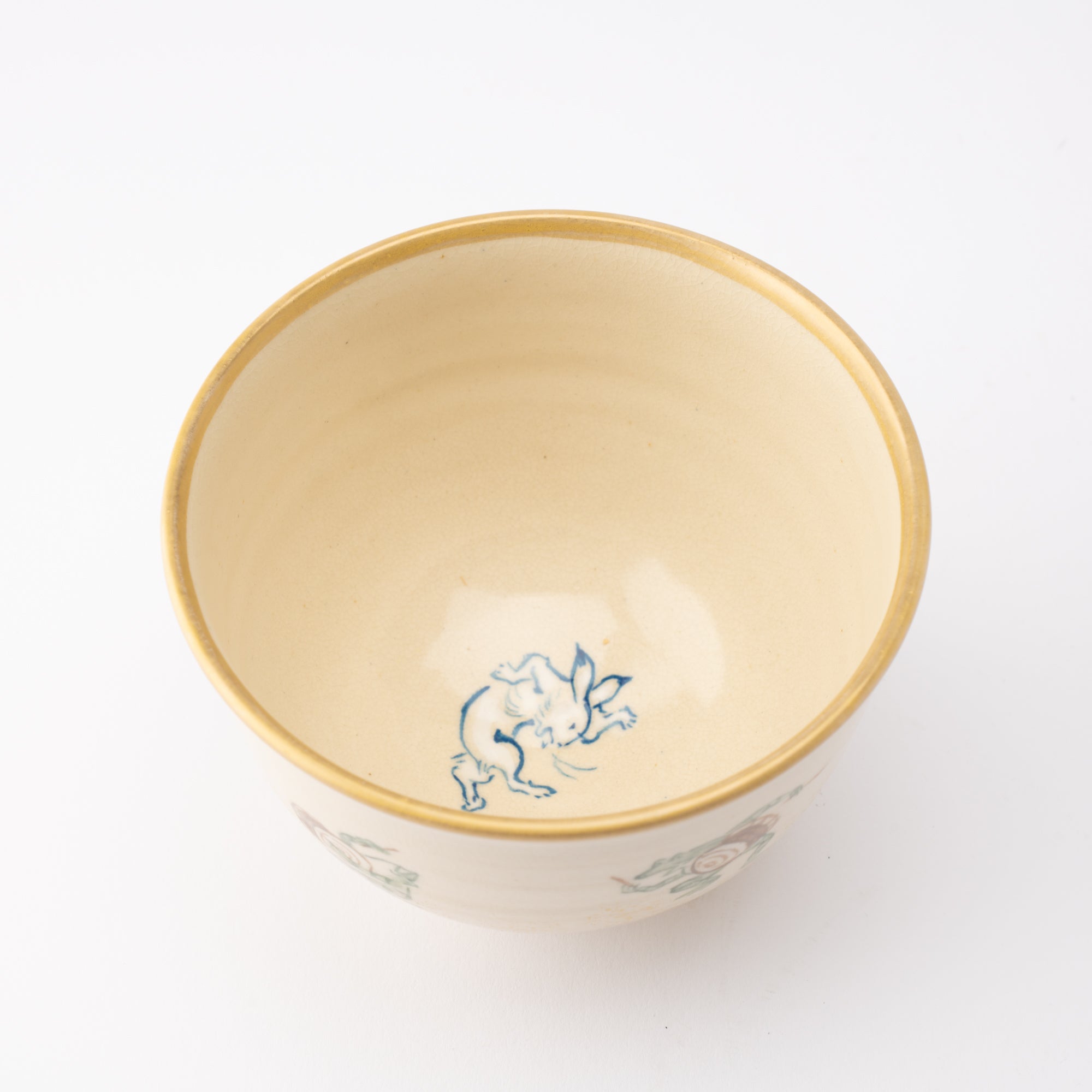
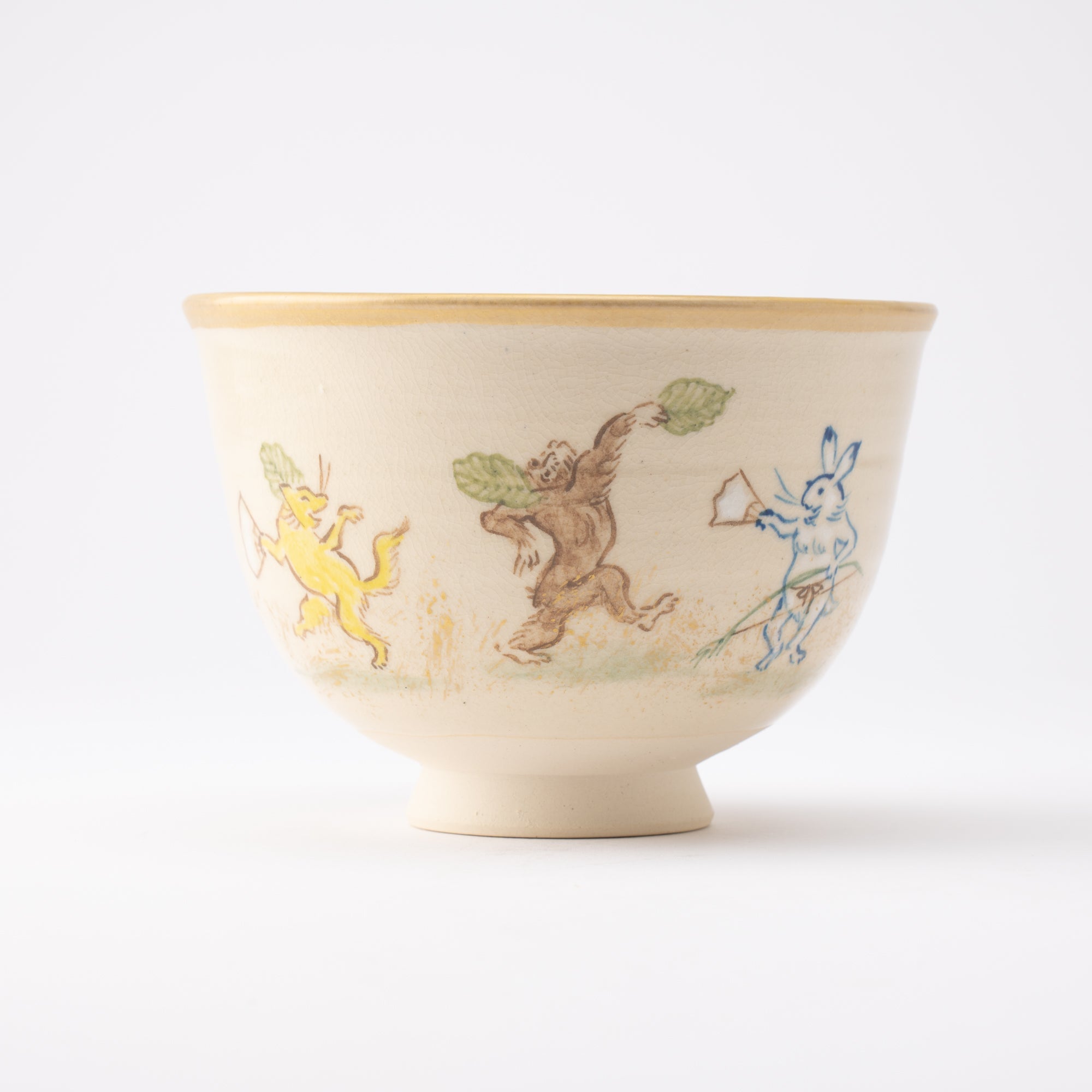
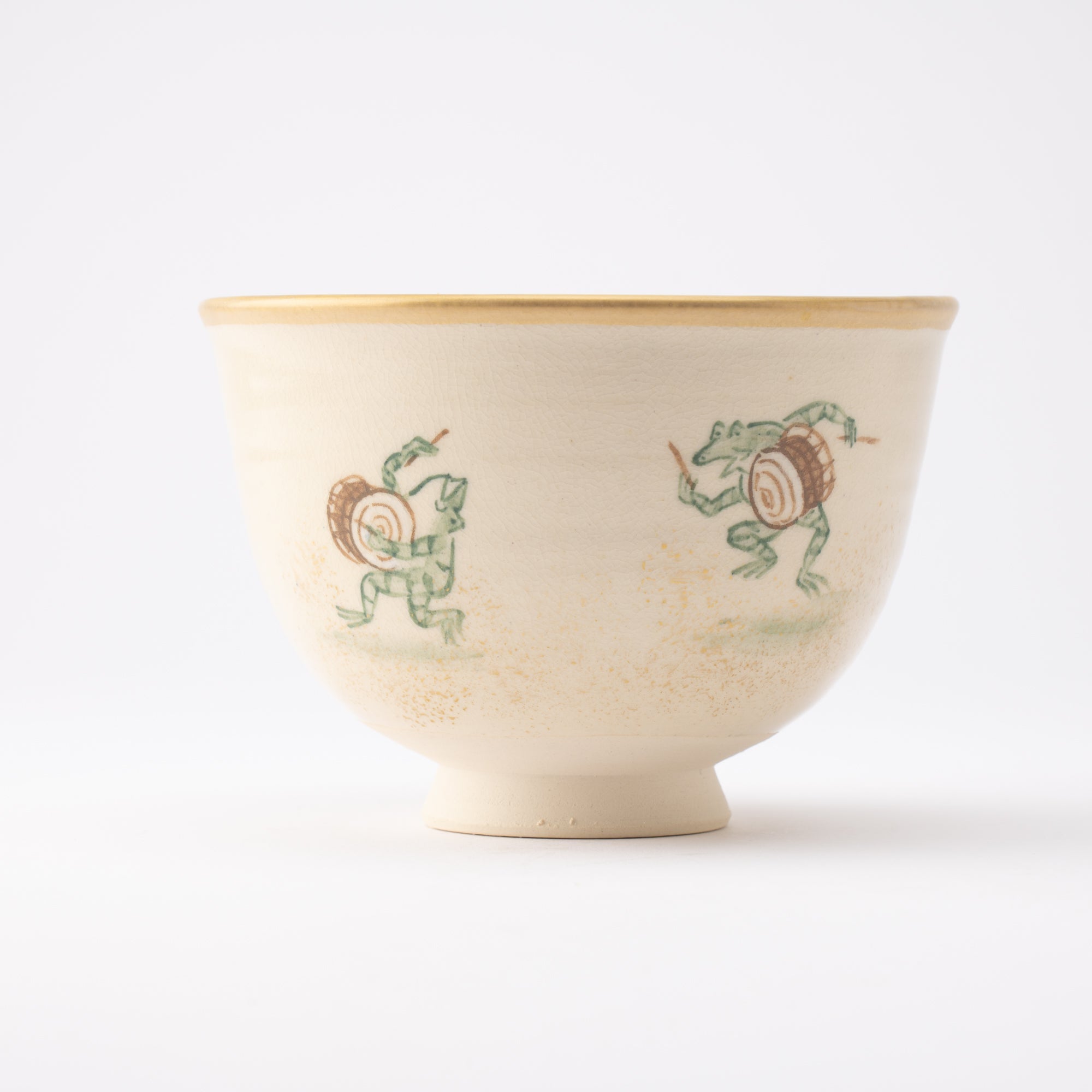
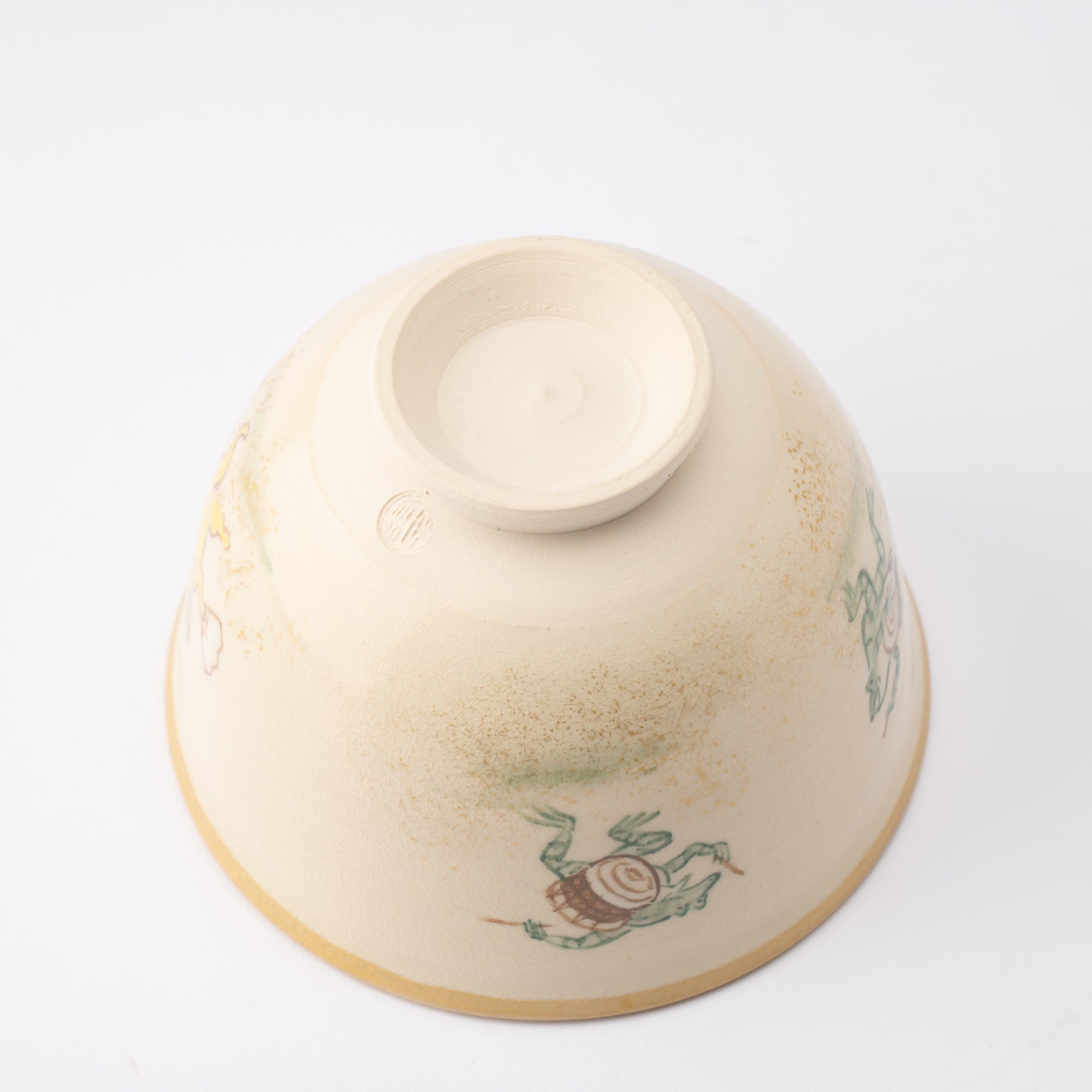
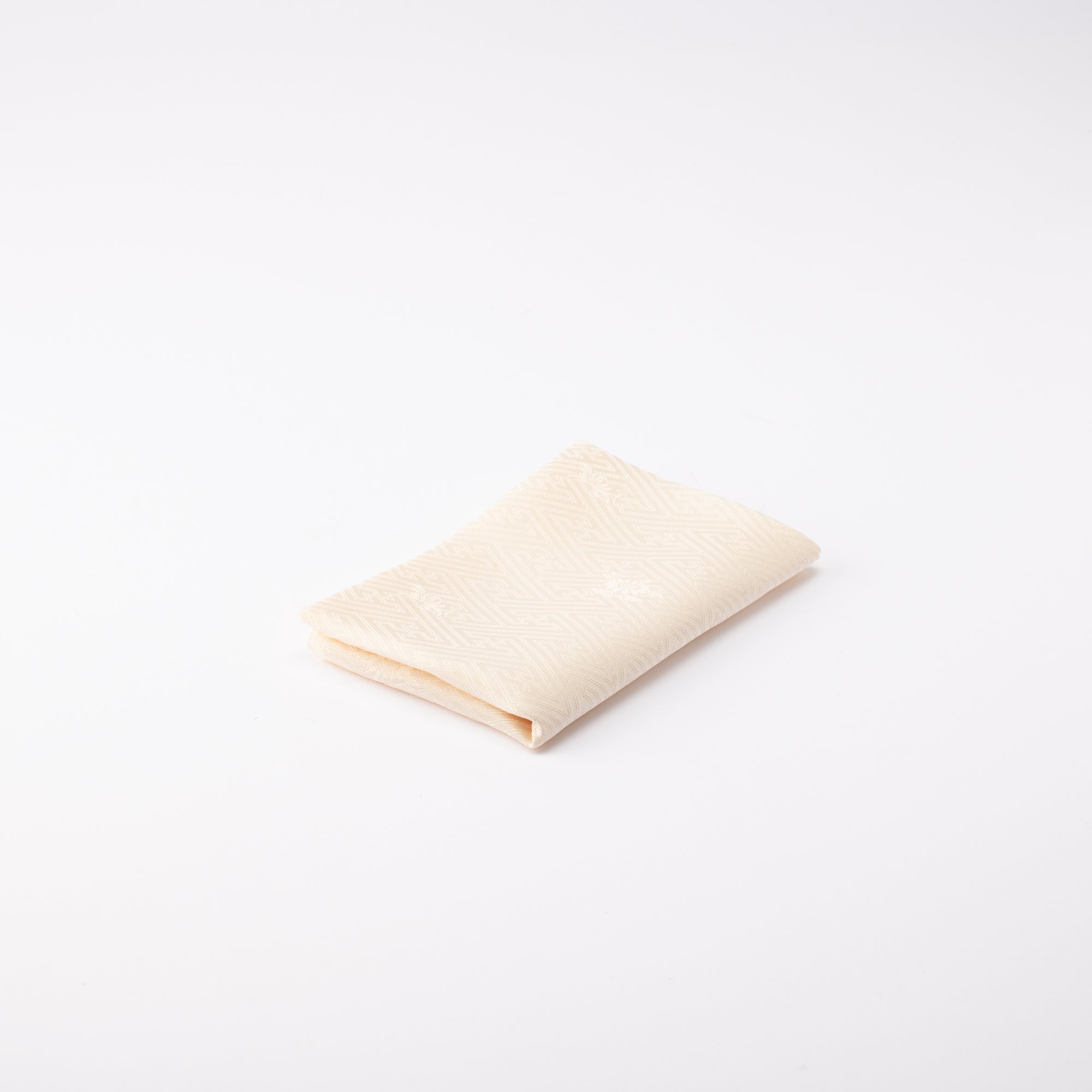
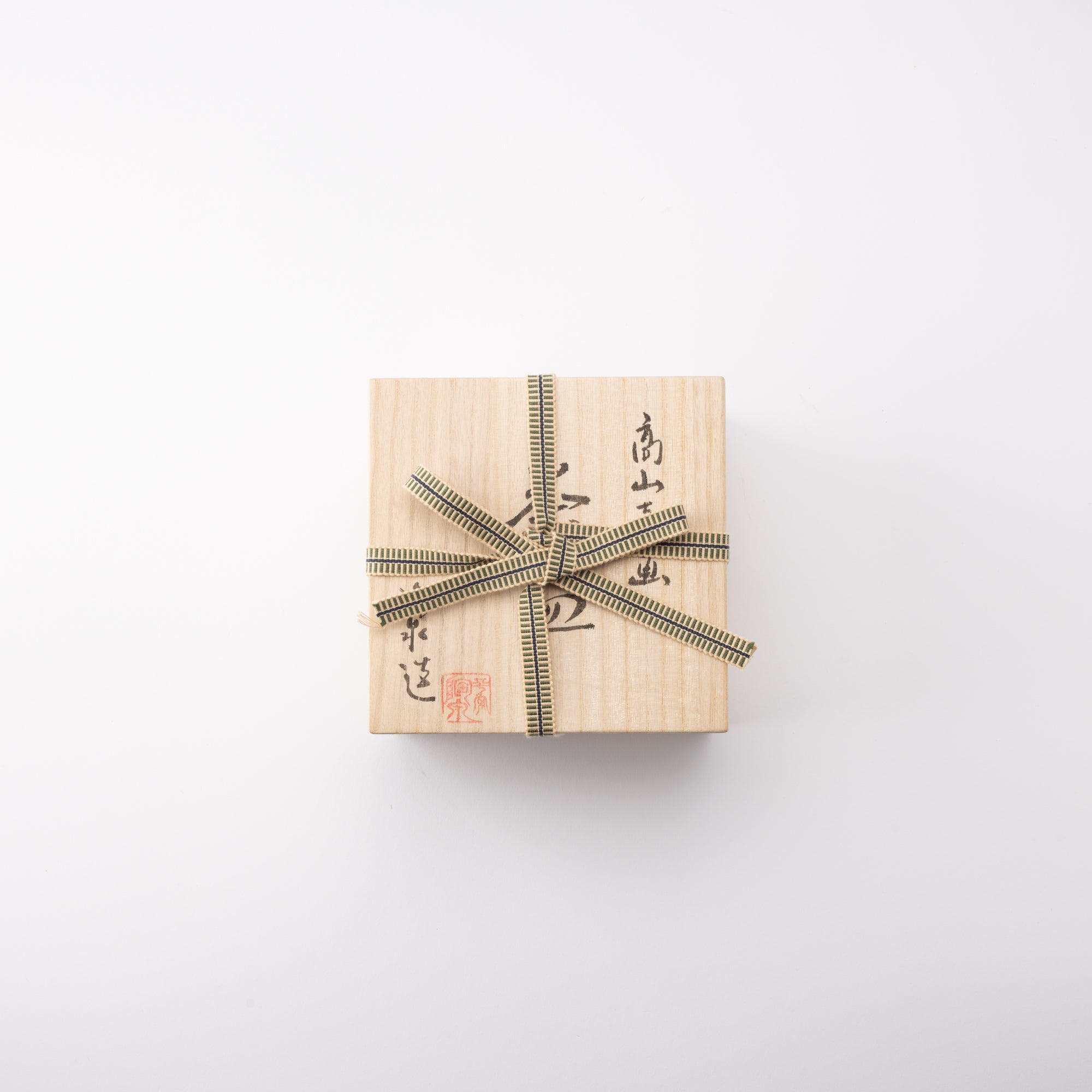
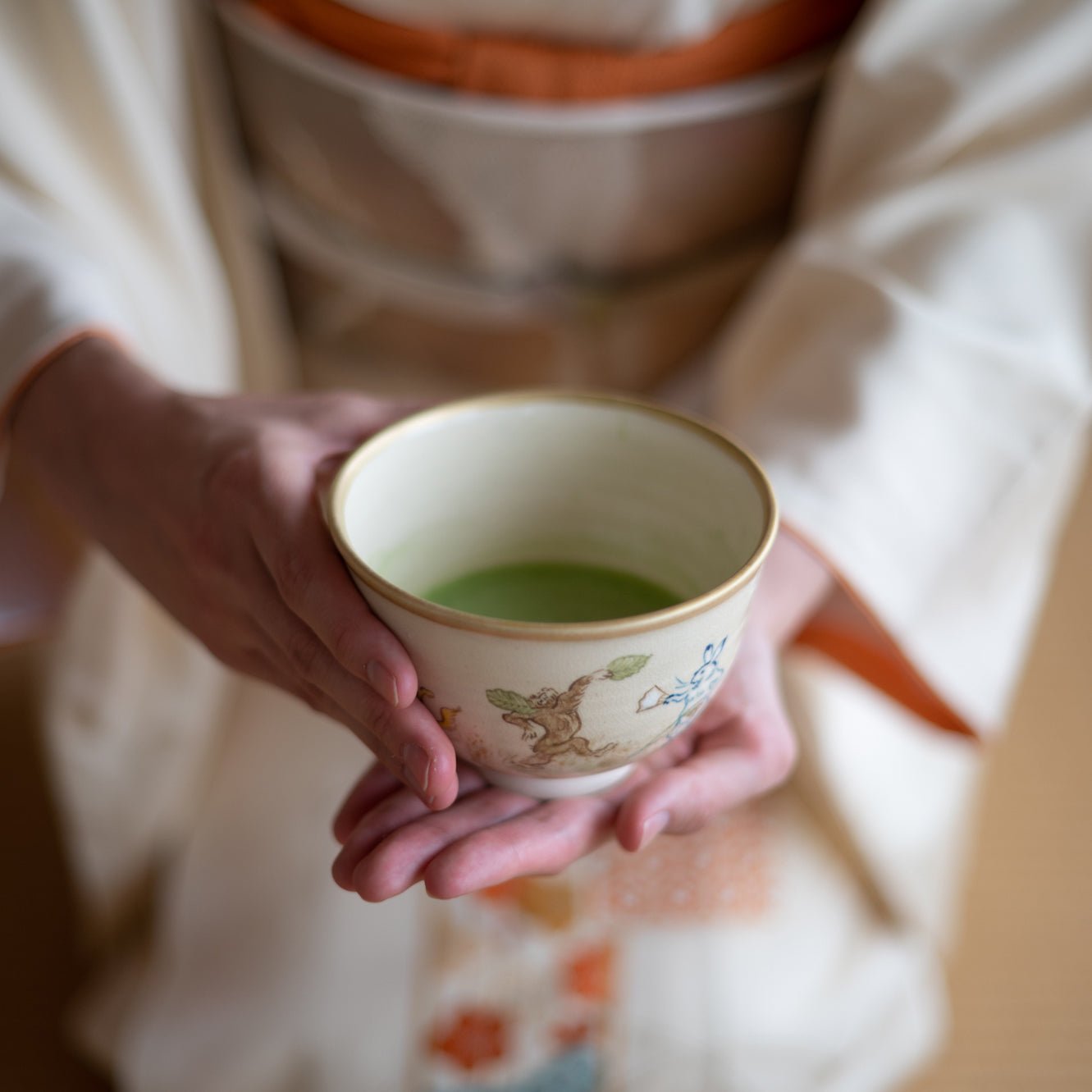
Kozan-ji-Tempel Choju Giga Matcha-Schüssel
Estimated Shipping Widget will be displayed here!
Diese Matcha-Schale mit der unverwechselbaren „Nami-Yu“-Glasur aus der Asche des Kyoto-Waldes hat eine natürliche Grundfarbe in gelblichem Cremeweiß. Sie zeigt die berühmte illustrierte Schriftrolle „Choju Giga“, eine karikaturhafte Bildrolle mit anthropomorphen Tieren und ihrer Verspieltheit aus dem 12. bis 13. Jahrhundert.
Die Bemalung wurde von individuellen Malern im japanischen Stil ausgeführt, die ihre eigene Originalität und Tiefe über die Erwartungen an eine bloße Dekoration hinaus verfolgen. Dreht man die Schale im Uhrzeigersinn, sieht man eine Reihe fröhlicher Tiere. Hier sehen wir Hasen und Frösche, die Instrumente spielen. Der Fuchs und der Affe führen einen lustigen Tanz auf. Das verspielte Design zeigt das Gemälde des Hasen auf dem Boden der Schale; der Hase ist ausgerutscht und hingefallen. Die handgebürsteten Goldlinien um die Oberseite und den Boden der Schale sind nicht gerade, was uns an die Arbeit einer sanften Menschenhand erinnert.
Eine Matcha-Schale in warmem Cremeweiß mit handgemaltem Design. Genießen Sie die Gesellschaft verspielter Hasen, Frösche und eines Fuchses und genießen Sie ein unterhaltsames Matcha-Trinkerlebnis. Es wird in einer Paulownia-Holzbox geliefert und ist somit ein ideales Geschenk für Matcha-Liebhaber.
EINZELHEITEN
| Quantity | 1 |
| Size |
D 12 cm (4.7 in) x H 8.5 cm (3.3 in) [Wooden box] L 15.5 cm (6.1 in) x W 15.5 cm (6.1 in) x H 12.8 cm (5 in) |
| Capacity | 300 ml (9.5 fl oz) |
| Material | Stoneware |
| Package Type | Wooden box |
| Microwave | No |
| Dishwasher | No |
Hersteller / Marke
Tosen Kiln wurde 1868 als Großhändler für Kiyomizu-Ware gegründet. 1944 eröffnete das Unternehmen ein Produktionsstudio in Mukomachi, einem Vorort von Kyoto, und begann damit die Produktion von Kiyomizu-Ware in großem Maßstab. Heute ist der Ofen in Gojo, Kyoto, in Betrieb und führt sein handwerkliches Erbe fort.
Tosen Kiln hat sich der Verfeinerung seiner Techniken und seines künstlerischen Feingefühls verschrieben und greift die traditionelle Handwerkskunst Kyotos auf, während es sie an die Moderne anpasst. Inspiriert vom Töpfermeister Nonomura Ninsei aus der Edo-Zeit, bewahrt das Unternehmen dessen präzise Drehtechniken und leuchtenden Malstil und verbindet diese mit klaren Linien und warmen Tönen, um Stücke zu schaffen, die mit der zeitgenössischen Ästhetik harmonieren.
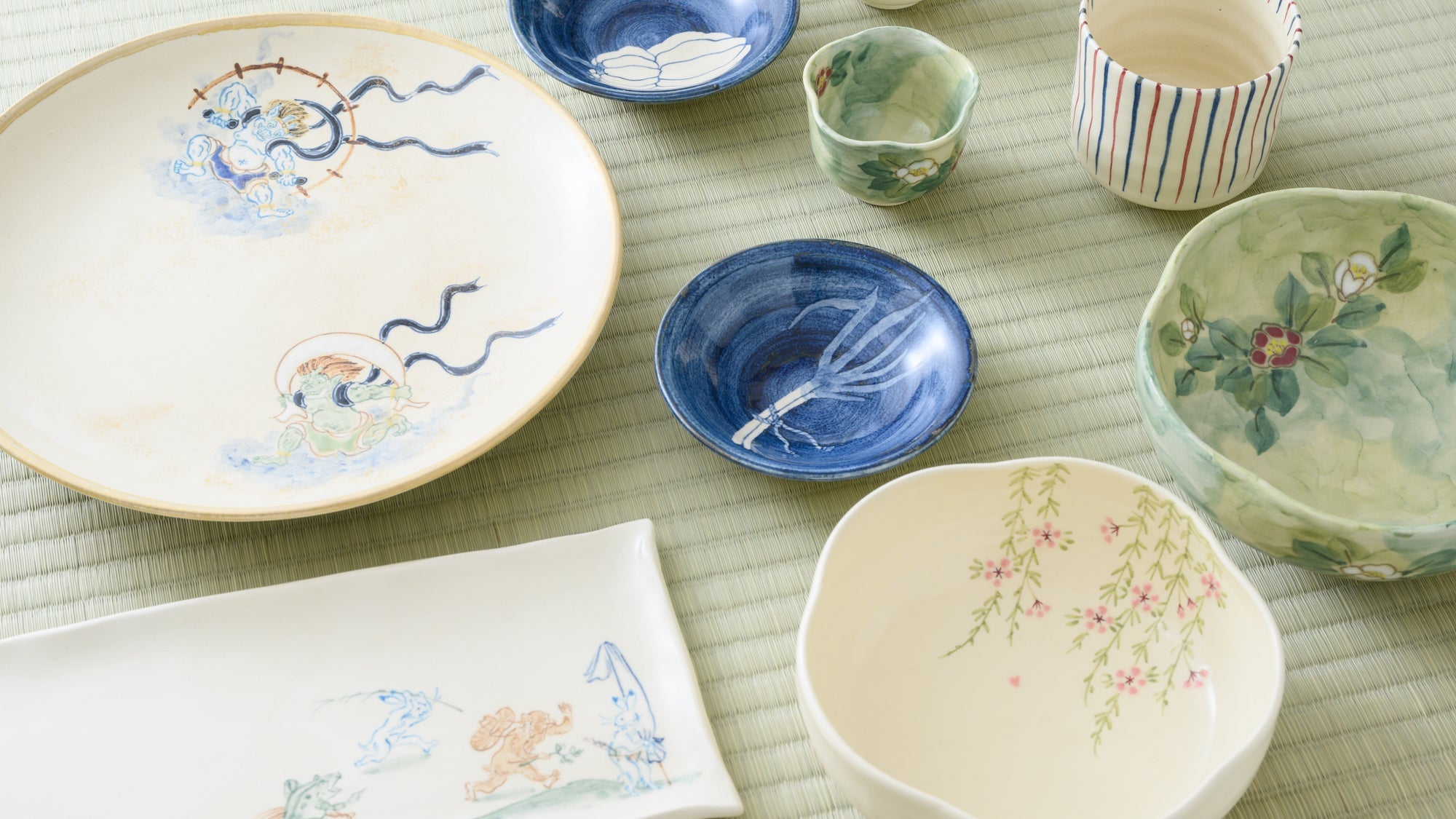
Kunsthandwerk
Kyo- und Kiyomizu-Ware, zusammen als Kyo-yaki und Kiyomizu-yaki bekannt, sind berühmte Keramikstile aus Kyoto. Bekannt für ihr lebendiges Design, ihre fein geformten Formen und die Liebe zum handwerklichen Detail, spiegeln diese Waren Kyotos unverwechselbaren Sinn für Schönheit und künstlerische Raffinesse wider.
Kyo- und Kiyomizu-Ware zeichnen sich durch eine lange gepflegte Vielfalt aus und greifen auf Techniken und Stile der Töpfertraditionen Japans zurück. So entwickelte sich eine ausdrucksstarke und typisch Kyoto-Kunstform. 1977 als traditionelles japanisches Kunsthandwerk anerkannt, werden sie bis heute wegen ihrer kulturellen Tiefe und Alltagstauglichkeit geschätzt.

Optionen auswählen
















Estimated Shipping Widget will be displayed here!
Matcha Schüsseln
Nehmen Sie sich einen Moment Zeit zum Entspannen und genießen Sie Matcha zu Hause mit einem authentischen und wunderschön zubereiteten Matcha chawan.
Entdecken Sie unsere Kollektion handgefertigter japanischer Matcha-Schalen, die alle von erfahrenen Kunsthandwerkern hergestellt wurden, und finden Sie die perfekte Schale für Ihr Tee-Erlebnis.
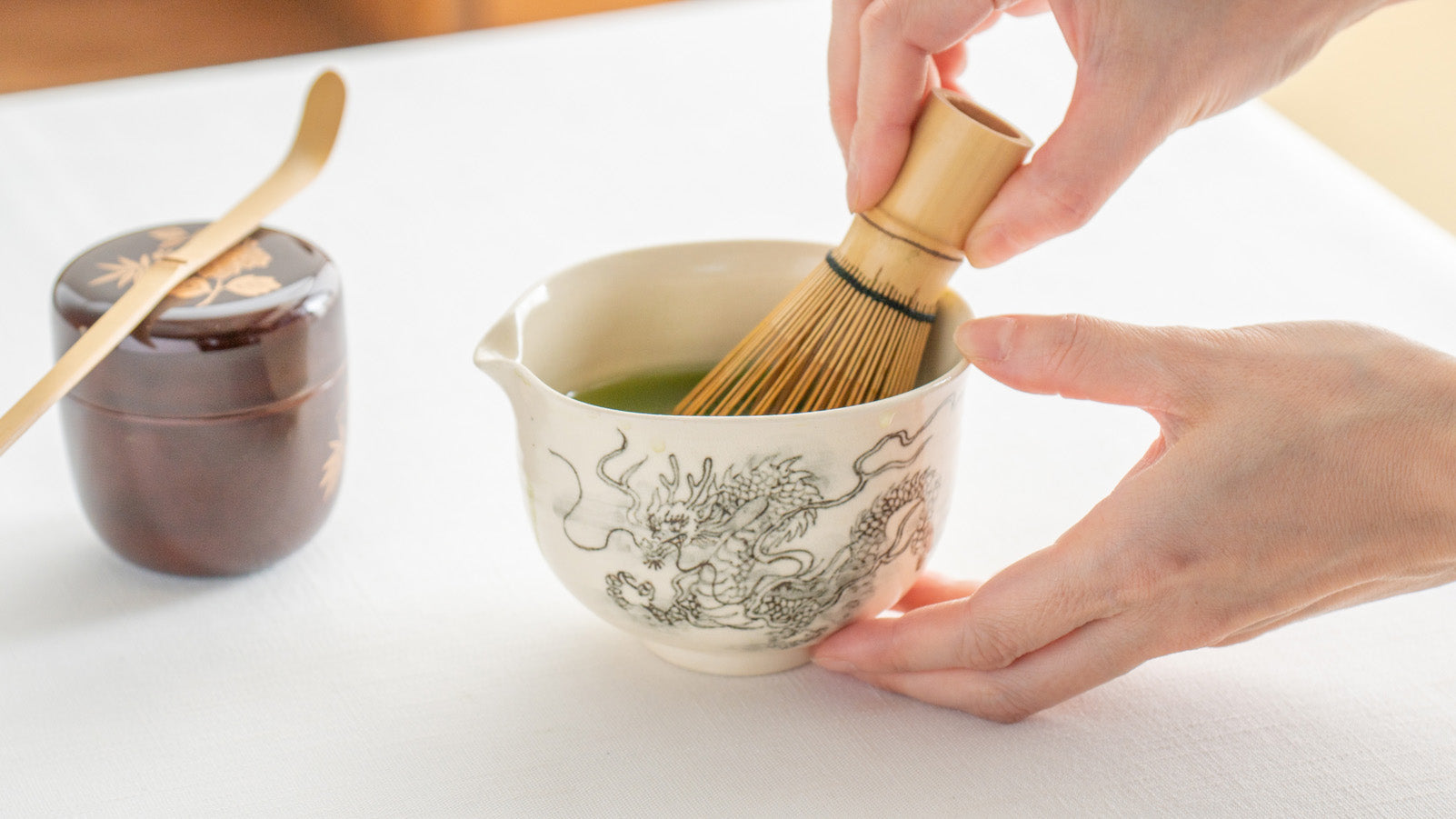
Steingut
Aus unserer Kollektion an Geschirr und Essgeschirr haben wir Steinzeugprodukte zusammengestellt, die die Wärme des Materials voll zur Geltung bringen. Wir hoffen, dass Sie diese Stücke, die bei Menschen jeden Alters und aus allen Regionen beliebt sind, in Ihrem Zuhause willkommen heißen.
